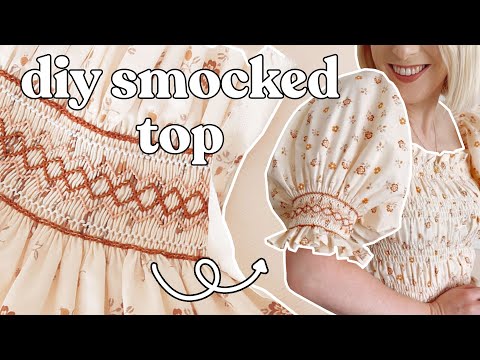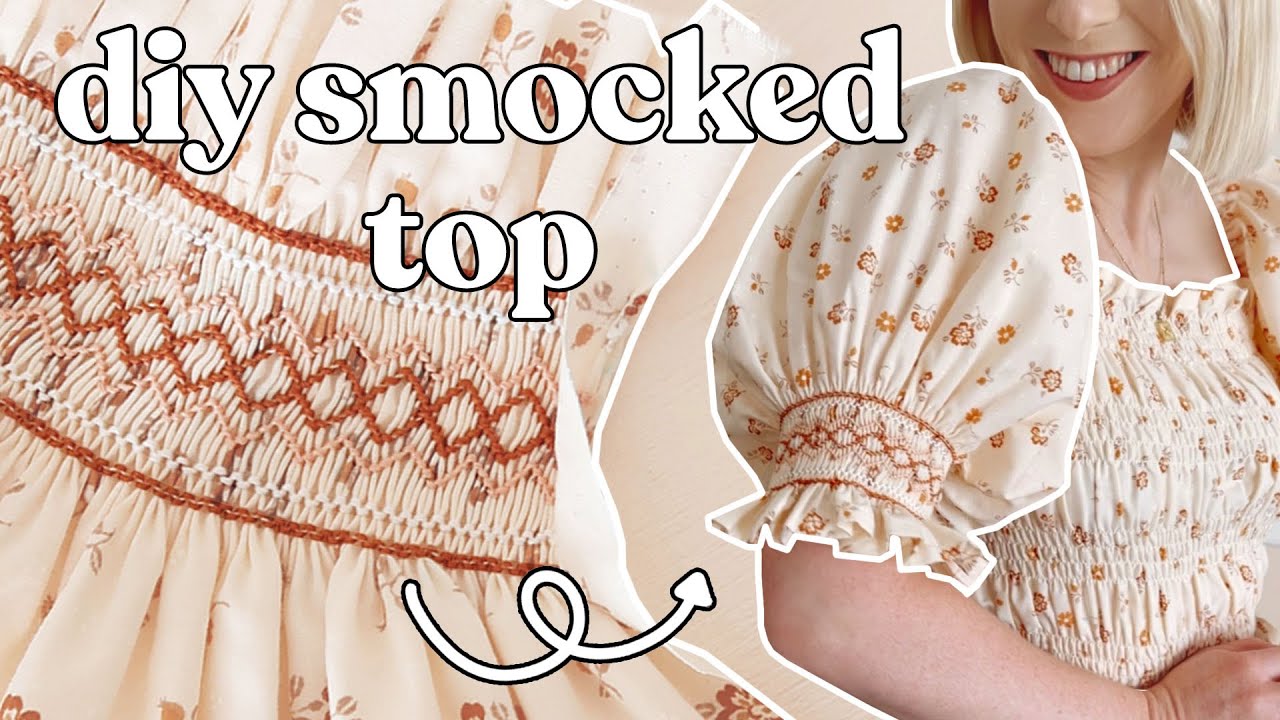Smocked fabric is a fascinating textile that is bound to captivate your senses. With its intricate and delicate smocking technique, this fabric is a true testament to the artistry and craftsmanship behind its creation. Each stitch is meticulously gathered and sewn, resulting in mesmerizing patterns and textures that are truly one-of-a-kind. The smocked fabric not only exudes elegance and sophistication but also offers a sense of timeless beauty. Its unique characteristics make it a versatile choice for a wide range of applications, from fashion garments to home decor. Whether you’re looking to create a statement piece with a touch of vintage charm or seeking to add a touch of whimsy to your interior, this fabric is sure to intrigue and inspire. Its rich history and enduring popularity make it a must-have for those who appreciate the finer details in life. So, why settle for ordinary when you can indulge in the extraordinary? Experience the allure of smocked fabric and let it weave its magic into your world.

What is Smocked Fabric?
Smocked fabric is a type of decorative textile that features intricate embroidered patterns across the surface of the fabric. This unique technique involves gathering fabric in small, even pleats and then stitching over the gathered sections to create a raised, textured effect. Smocked fabric has been used for centuries to embellish clothing, home textiles, and accessories, adding a touch of elegance and charm to any design.
The History of Smocked Fabric
The origins of smocked fabric can be traced back to ancient times, with evidence of smocking techniques found in garments dating back thousands of years. However, it wasn’t until the Middle Ages that smocking became widely popular in Europe. During this time, smocked fabric was primarily used to create fitted garments, as the gathered sections allowed for flexibility and ease of movement. Smocking was often seen on the sleeves, bodices, and collars of dresses and tunics, adding both decorative and functional elements to the garments.
The Smocking Process
Creating smocked fabric requires skill and precision. The process begins with selecting a suitable fabric, typically lightweight and soft, such as cotton or silk. The fabric is then pleated using a smocking template or by hand, ensuring that the pleats are even and consistent. Once the pleating is complete, the gathered sections are carefully stitched together using decorative embroidery thread. This stitching not only secures the pleats but also creates the intricate patterns that are characteristic of smocked fabric.
Uses of Smocked Fabric
Smocked fabric is incredibly versatile and can be used in various applications. Historically, it was predominantly used in clothing, particularly children’s garments, as the gathered sections allowed for growth and movement. Smocked dresses, rompers, and blouses continue to be popular choices for children’s clothing due to their timeless appeal.
However, smocked fabric is not limited to clothing alone. It is also commonly used in home textiles, such as curtains, pillow covers, and table linens. The delicate embroidery and raised texture of smocked fabric add a touch of elegance and sophistication to any room. Additionally, smocked fabric can be incorporated into accessories like bags, headbands, and even face masks, allowing individuals to showcase their unique style and appreciation for intricate craftsmanship.
The Modern Appeal of Smocked Fabric
In recent years, smocked fabric has experienced a resurgence in popularity among fashion designers and consumers alike. The timeless charm and intricate detailing of smocked fabric have captured the attention of those seeking to add a touch of nostalgia to their wardrobe or home decor. Designers have incorporated smocked fabric into their collections, reinventing classic silhouettes with modern twists, while consumers have embraced the trend, appreciating the artistry and craftsmanship behind each smocked creation.
Whether used in children’s clothing, adult apparel, or home decor, smocked fabric continues to captivate with its unique texture and intricate designs. Its rich history, versatile applications, and modern appeal make smocked fabric a timeless choice for those seeking to add a touch of elegance and sophistication to their lives.
“Effortlessly Chic: Creating a Smocked Top with 3 Rectangles for Ultimate Slow Fashion!”
List about Smocked Fabric
Smocked Fabric
| Property | Description |
|---|---|
| Definition | Smocked fabric is a type of textile that features decorative embroidery or gathering stitches, creating a unique texture and pattern. These stitches are typically elasticized, allowing the fabric to stretch and gather in a controlled manner. |
| Origin | The art of smocking originated in ancient civilizations, with evidence of its existence dating back to as early as 3000 BC. It was predominantly used in traditional garments worn by peasants and later gained popularity in high-end fashion during the Renaissance period. |
| Technique | Smocking involves hand-stitching or machine-sewing rows of closely spaced gathering stitches on the reverse side of the fabric. These stitches are then pulled tightly, creating small pleats on the fabric’s right side. Intricate embroidery or decorative patterns are then worked across these pleats, adding a visually appealing texture to the fabric. |
| Applications | Smocked fabric is primarily used in the creation of garments, particularly children’s clothing, blouses, dresses, and traditional folk costumes. It is also utilized in home decor items such as curtains, pillow covers, and tablecloths, adding a touch of elegance and sophistication. |
| Materials | Smocked fabric can be crafted from various materials, including cotton, silk, linen, or synthetic blends. The choice of fabric depends on the desired outcome, as different materials may lend themselves better to specific styles or applications. |
| Advantages | Smocked fabric offers numerous advantages, including enhanced elasticity, breathability, and durability. It allows for comfortable movement and is often praised for its ability to retain its shape even after repeated use and washing. Additionally, the intricate patterns and textures created by smocking add a touch of luxury and sophistication to any garment or accessory. |
| Maintenance | To maintain the beauty and longevity of smocked fabric, it is recommended to hand wash or use a gentle machine cycle with mild detergent. Avoid wringing or twisting the fabric, as this may damage the delicate embroidery. Air drying is preferred, but if using a dryer, choose a low heat setting to prevent shrinkage or distortion. |
By incorporating smocked fabric into your designs or home decor, you can effortlessly elevate the aesthetic appeal and bring a touch of timeless elegance to any setting.

